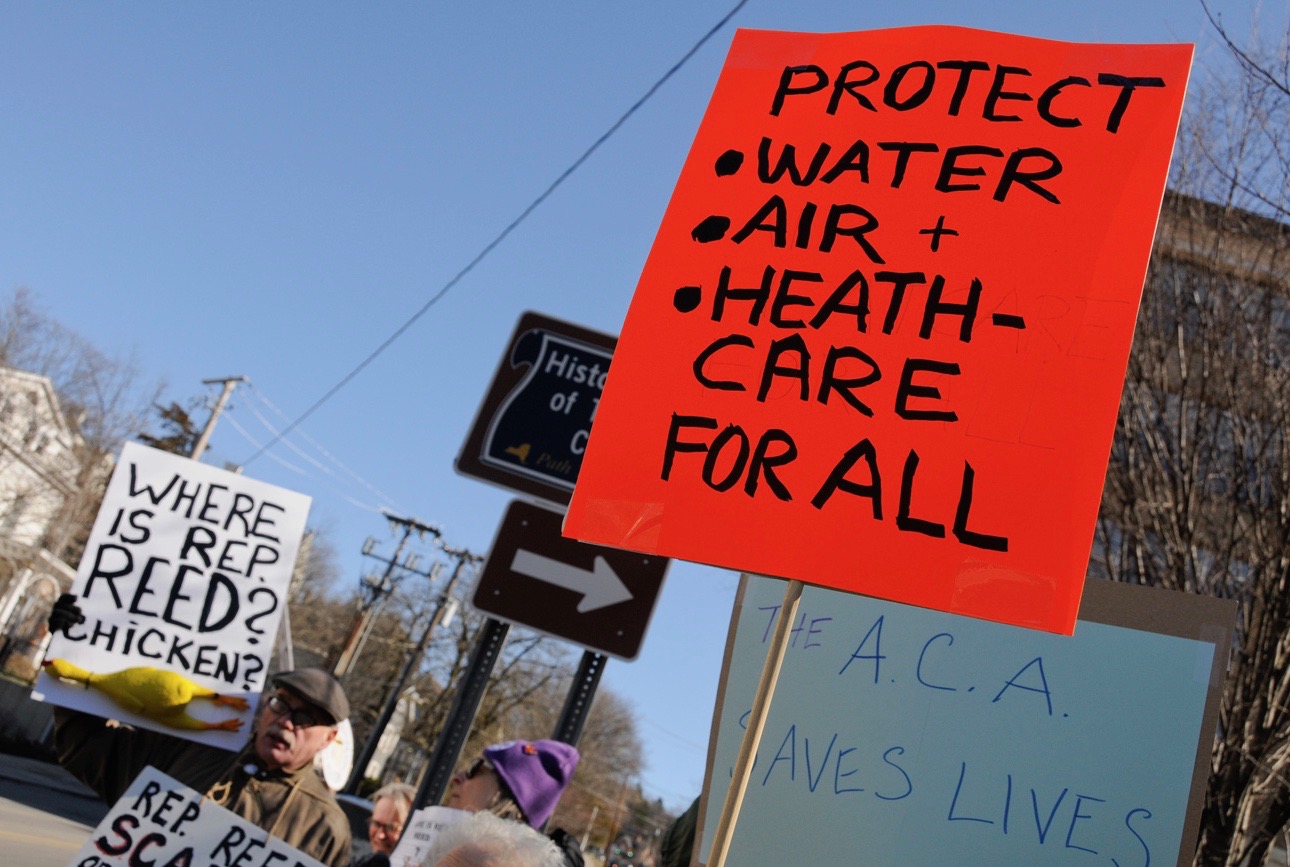I look at the new Graham-Cassidy health care bill that was proposed in the Senate and have trouble believing any politician would propose such legislation at all, let alone four times this year. It is a slightly changed version of previous examples of Republican denial of health care legislation that were unsuccessful, except this time, it gives more power to individual states to determine the final shape health care will take.
15 million people could lose their health care immediately under this bill, 32 million by 2027. This does not include all the people whose insurance rates would go up so much that the quality of their lives would be undermined. The bill would destroy the protections against insurance companies denying coverage for people with preexisting conditions, or raising lifetime caps on payments or raising premiums exponentially. It would cut Medicaid. Almost one-half of births in the US and one-half of the people covered by Medicaid are children, 14% are people with disabilities. It would cut funding for Planned Parenthood and change where federal health care funding goes, taking it from blue states to give to red ones. [I don’t even want to get into how Medicare and other social programs are under the gun in this bill and Republican budget plans.]
Why propose legislation that is so blatantly wrong, so blatantly opposed to the best interests of most Americans, and do it again and again? Do they actually think it would be good for the country? Or is it, as many have suggested, a cynical political move, an attempt to deliver a promise to their constituents to repeal anything with President Obama’s name on it? Are they doing it to serve the interests of the super rich who pay for their campaigns and whose interests they primarily serve? Do they think if Medicaid is cut, there will be money to enable tax cuts to the wealthy in the budget?
If they are doing it because they think it will serve the interests of their constituents, then I’m really confused. I understand that red state politicians and voters might be happy to take money away from blue states. But other than that, people will be hurt by this bill whether they are Republican, Democrat or Independent.
I think they are either hiding the intent of the bill or they believe the government has no role to play in delivering or protecting health care—or the health—of people. They believe that the best way to serve others is to do nothing to help them. They believe only if a person can pay for it do they deserve it. They believe the only responsibility each person has regarding others is to protect one’s own self-interest. The only value of others is what they can get for you or how they can serve you. The people who have power and money deserve that power and money. Thus, politicians only have one role—to protect the interests of the rich.
This leaves each of us isolated behind a wall of our own imagining, and the only protection we have is the power of the guns we own or control. This is not the sort of nation I support or think most Americans believe in. We’re better than this. We’re not just creatures isolated from others by the way we think of them. When I look within, I find others at the depths of who I am, not as objects to use but as fellow beings I care about and who care about me.
Many Republicans have been lying about the Affordable Care Act (Obamacare) for years. They have been saying Obamacare takes away choice, isn’t working and is causing unaffordable rate increases, when in fact it is working (although it needs fixing). There have been rate hikes, but those hikes are below the levels that existed before the ACA. For example, according to a Forbes magazine report on statistics by the US Department of Health and Human Services, premium rate hikes from 2010 to 2015 were below those common in earlier years, especially 2004 to 2010. And the increases that have been observed are partly due to efforts by Republican politicians to cause those rate hikes.
How have many Republican politicians tried to undermine the ACA? Let’s go back to 2014-15, to Marco Rubio and other Republicans, who attacked what are called “risk corridor” federal payments. The ACA is meant to cover everyone. One fear of proponents of the ACA was that there would be too many sick people on the roles of insurance companies and too little money from premiums, so the ACA was structured to use federal funds to cover the risks (or “risk corridors”) undertaken by insurance companies. Republicans, however, fought against these payments and in 2014 inserted a provision into a spending bill to reduce the risk payments. Because of these attacks by Rubio and company, only 13% of what insurance companies were expecting was paid in 2015. Insurance companies then had to raise rates to make up for this deficit.
President Trump further worked to destabilize the ACA by threatening to withhold subsidies to help poorer Americans pay their premiums. Because of this threat, insurance companies talked about possibly raising premiums.
The ACA has been met with distortions and/or lies ever since it was first proposed. We could go back to 2009 and Sarah Palin’s false claims that Democrats were trying to create “death panels” in the new health care law (the ACA) to determine if seniors and the disabled were worthy of care. In recent weeks, there have been claims that Democrats rushed through the ACA without hearings and were just as secretive as Republicans have been in the house and Senate. Wrong. Do your own fact checking (with reliable information data bases).
The Republicans, from day one, excluded Democrats from playing a role in crafting any of their 2017 health care bills. They debated behind closed doors and held no hearings. They tried to rush through their bills before the CBO could analyze the legislation or voters organize (although they didn’t succeed in this effort), or sometimes even allow Senators to fully read the bill. They initiated a “reconciliation” process in the Senate that limits debate to 20 hours, limits Democrats from adding any substantive amendments. And instead of the normal procedure, where such major legislation would require 60 votes to pass, they would only need a simple majority to pass their bill.
In contrast, the ACA was debated in three House committees and two in the Senate. It was subject to hours of bipartisan debate that allowed for amendments. The contents of the bill were provided to members of both parties throughout the debate process. It took nine months to pass and, don’t forget, it was based on a model developed by the conservative Heritage Foundation and pushed by Romney to become policy in Massachusetts. (And if you want another example of Republican distortions of the latest bill, listen to Jimmy Kimmel’s piece on You Tube about his interactions with Senator Cassidy.)
The ACA is not perfect and not the best imaginable legislation. It is complex and cumbersome. But millions of people are insured now that wouldn’t have been otherwise. There are now federal protections for individuals with preexisting conditions, for comprehensive coverage, etc, that weren’t there before. And it is clear that Republican politicians have been working to demonize Obamacare or drive up the premiums so more people will lose or dislike their insurance and thus support Republican efforts to repeal it.
If you are concerned about health care, about economic freedom or equity, concerned about the wellbeing of family members, neighbors, your business and the future of this country, please speak up. Call your Senators, and especially call Republican Senators and tell them what you think of their bill, write letters, protest in any way you can. Try to wake up their better nature. The health and wellbeing of a majority of Americans is on the line.
*Update: Senator John McCain announced today (Friday, 9/22), that he will oppose the bill. One more Republican is needed to stop the legislation (for now).
Some phone numbers to call:
Capito, West Virginia: 202 224 6472
Collins, Maine: 202 224 2523
McCain, Arizona: 202 224 2235. Thank him for coming out against the bill.
Murkowsky, Alaska: 202 224 6665



